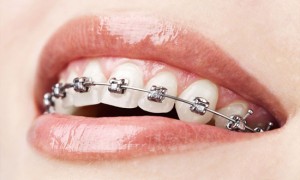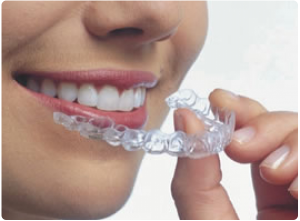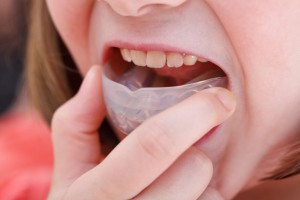Bite correction terms

Currently, orthodontics offers many options for correcting malocclusion, not only in children but also in adults.
Anomaly in the development of occlusion affects the functionality of the teeth, which adversely affects human health.
Improper bite can also cause psychological discomfort.
A bite defect is best corrected at an early age, as well as during an active tooth change, but modern technology allows this to be done at any age.
Ways to correct anomalies
To correct the bite in children and adults, orthodontists use various devices:
- In early childhood, removable orthodontic devices are successfully used: plates, trainers.
- In children with a permanent bite and in adults, braces are used to correct the defect.
Thanks to orthodontic designs, it is possible to achieve not only the correct setting of the teeth, but also get the perfect cosmetic result.
How long does the treatment take
- The process of bite correction is quite lengthy.
- The timing of the correction of the pathology depends on the degree of development of the anomaly, as well as on age.
- Rapid correction of the anomaly occurs during the period of the milk and the replacement bite, when the jaw bones are still quite soft and easily correctable.
Patients with a persistent bite should be patient and not expect quick results. On average, the term for correcting anomalies in an adult is at least one and a half to two years.
The complex of corrective procedures consists of three stages:
- Preparatory. At this stage, a therapeutic and, if necessary, surgical dental treatment is performed.
- The main stage is the wearing of orthodontic structures.
- Fixing or retention period. At this stage, the achieved result is fixed.
Often, the patient himself can speed up the period of correction of the anomaly by impeccably following the recommendations of the orthodontist.
Video: “Bite Correction”
Features of braces treatment
At present, bite correction with a bracket system is the most progressive method for correcting anomalies.
Bracket treatment can range from eight months to two and a half years.
- Braces are attached separately to each tooth, connecting them together using a special metal arc with shape memory.
- Once every one and a half to two months, a correction procedure is required.
If the patient wants to hide the treatment process from others, then you can use a lingual bracket system, which is fixed on the teeth from the lingual side. This design can only be used by adults, since it imposes a certain responsibility on the person.
Also an excellent solution from the point of view of aesthetics can be the use of a sapphire bracket system.Such braces are mounted on the outside of the teeth, but are completely invisible to others.
- The procedure for fixing the bracket system is painless, but after installing it, the patient may experience discomfort for some time.
- In addition, there may be such unpleasant phenomena as rubbing the mucous membrane of the cheeks with the system, as well as the presence of pain when biting.
Bite correction with removable devices
Transparent mouth guards (eliners)

The duration of treatment with caps is from six months to a year.
The advantage of such designs is that:
- They are completely invisible on the teeth.
- When using the caps, there is no discomfort.
- Designs do not cause allergies.
- They can be removed if necessary.
Trainers (myofunctional devices)

The structures are made of silicone and have a rigid frame inside. They are used to correct a bite at the age of six to sixteen.
The advantages of trainers are that:
- When using, there is no uncomfortable state.
- Recommended for use at night and several hours during the day.
- Fast treatment results (the term for correcting anomalies is from 6 to 9 months).
- Do not cause irritation of the cheeks and lips.
- Contribute to getting rid of bad habits.
The use of records
Plate treatment is carried out mainly in childhood.
In adults, their use is impractical, since the skeletal system has already been formed and is difficult to change.
Terms for correcting malocclusion in adults
Bite correction in adults, compared with children, takes longer than in children.
- The success of treatment depends on the type of pathology, the characteristics of the dentofacial system and the adequacy of the method of treatment used.
- To shorten the time and increase the effectiveness of treatment, surgical correction of anomalies is often used with hardware methods.
Consolidation of results
- At the end of treatment, anomalies in order to consolidate the results obtained, a retention period begins, in which, with the help of retainers, the teeth are held in an ideal position.
- The length of the retention period is about two years. This period can not be excluded, as the teeth can return to their original position.
Types of Retainers:
- Removable - these are mouthguards that are made on the basis of the obtained jaw casts.
- Non-removable - thin metal arcs that attach to the front teeth from the inside.
The choice of type of retainer depends on the direction in which the teeth moved.